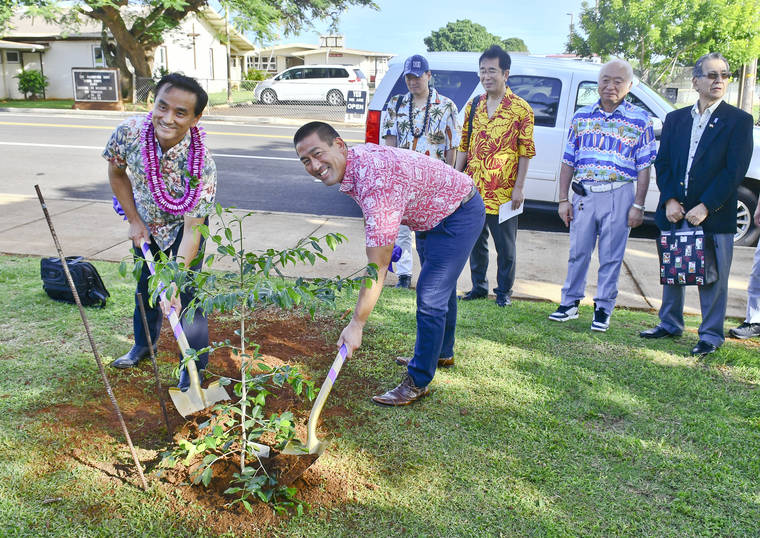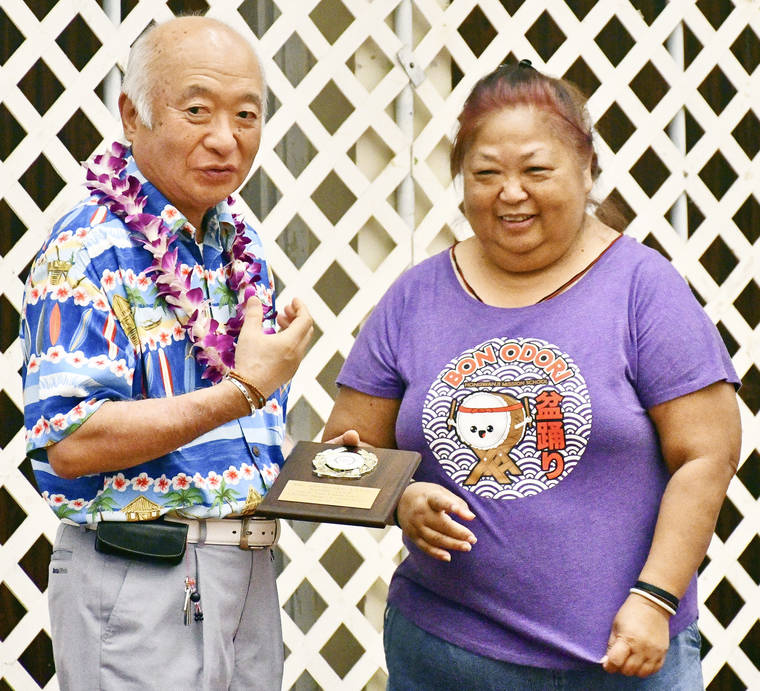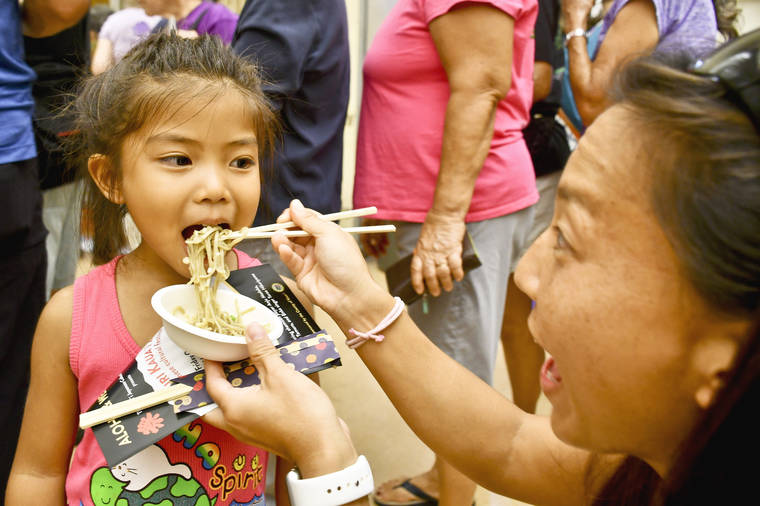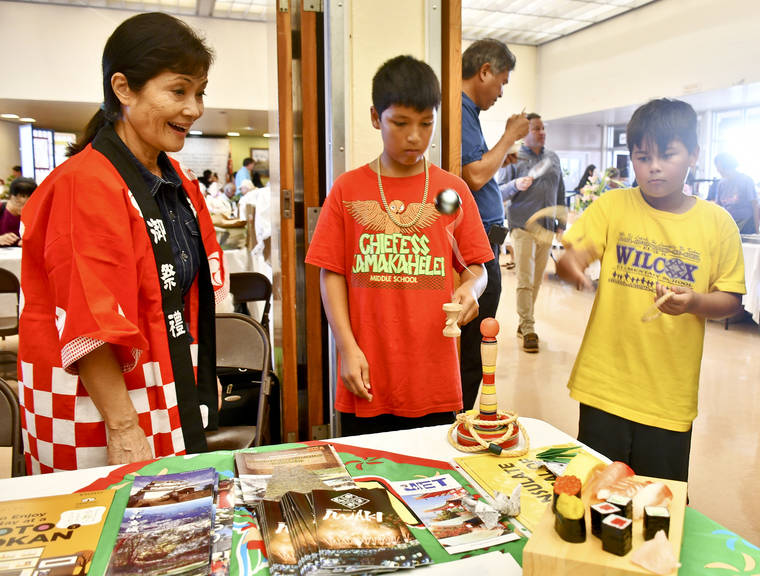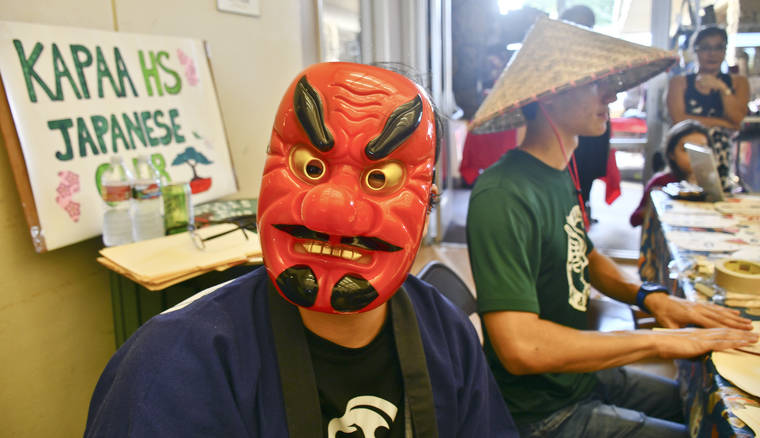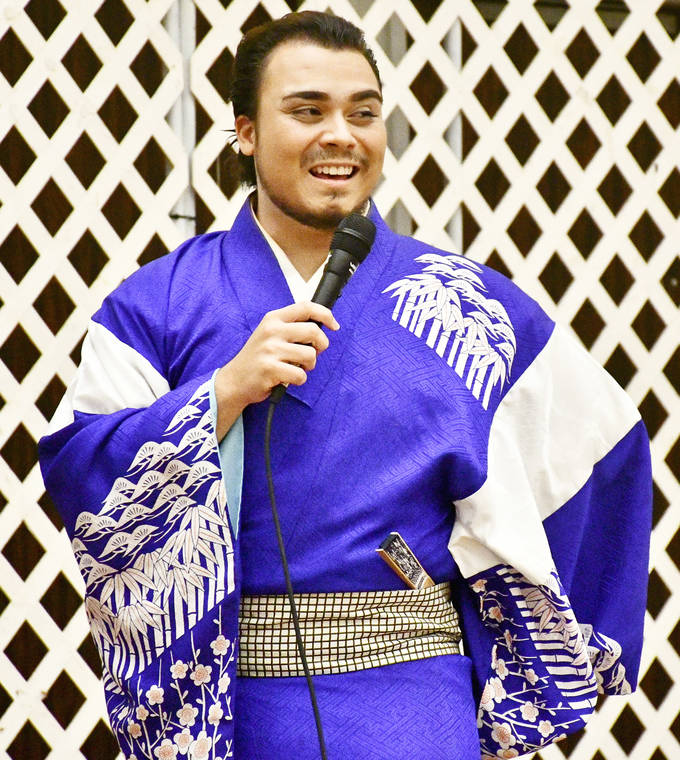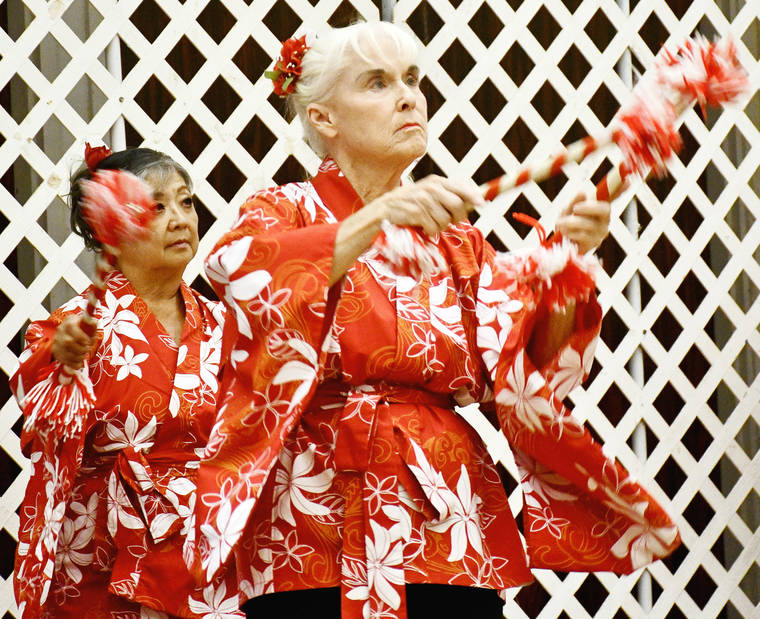Shungaku Yanai, the president of the National Association of Chairpersons of Prefectural Assemblies and chair of the Yamaguchi Prefectural Assembly, has been visiting Kauai for 34 years.
“I had a lot more hair when I started coming,” Yanai said while accepting the Kansha Award, or the Rainbow Bridge and Kokoro, or the heart of Kauai, from Pearl Shimizu, organizer of the 34th annual Matsuri Kauai that unfolded Friday afternoon at the Kauai War Memorial Convention Hall. “After 35 years, Mayor Derek Kawakami’s daughter is worried about my hair. But not to worry, because I’ll keep visiting Kauai.”
Yanai was also present among the dignitaries participating in a tree-planting ceremony with Kawakami and Gov. Tsugumasa Muraoka of Yamaguchi Prefecture, Japan, symbolizing the solidifying of the Sister City relationship with Yamaguchi Prefecture and Kauai, before the start of Matsuri Kauai.
“When I visited Japan with other people in the Kauai delegation a few weeks ago, we were treated with the utmost respect, hospitality, and an aloha spirit unlike anywhere else,” Kawakami said.
“It’s this level of aloha that has connected out countries and our cultures together for many, many years. Kauai and Japan have always had a close connection, and we are truly an extended ohana — family. I am grateful to commemorate our friendship with this special tree that is being planted here on the grounds of the Kauai War Memorial Convention Hall,” said Kawakami.
The 34th annual Matsuri Kauai that followed the formality celebrates the reconnection to the Japanese, and for some people, exposure to the Japanese culture, Kawakami said.
The young people who flowed through the convention hall ensures the passage to the next generation, and the generation after that who will visit and enjoy the alahe‘e tree that was planted, he said.
The festival started with a moment of silence led by Kawakami to reflect and sympathize with the victims of the recent Typhoon Hagibis that ravaged western Japan.
That disaster prevented the appearance of Iwaki City officials, who are busy getting back to normal following the storm.
“Iwaki City has profound gratitude for all the aid received following the 2011 earthquake,” Yanai said. “Since the 2011 signing, we strive to improve the relationship and the festival. We look forward to seeing our governments working together and build on this relationship.”
Working on an untraditional Friday afternoon, Matsuri Kauai offered a variety of Japanese cultural experiences, including a variety of food, crafts, games, bonsai, tea ceremony, and Japanese dancing by the various Japanese dance clubs and groups.
One of the more popular events included the soba noodle making and sampling by the Edo Ryu Teuchi Soba, and Todoroki Soba no Kai.
“Do you realize we grow buckwheat used in zaru soba?” asked Laurie Yoshida of Corteva Agriscience. “We have them on the South Shore where we use buckwheat as a cover crop. The Japanese use the seeds to make flour that goes into the making of zaru soba. We plow them under just as the seeds come out.”
Other popular demonstrations included the mochi-making using the traditional usu, or mortar, and kine, or wooden mallet, the event drawing awe from the spectators as the attendants turned the hot rice between the poundings.
“The aloha spirit is alive and well in Japan,” Shimizu said.
•••
Dennis Fujimoto, staff writer and photographer, can be reached at 245-0453 or dfujimoto@thegardenisland.com.
